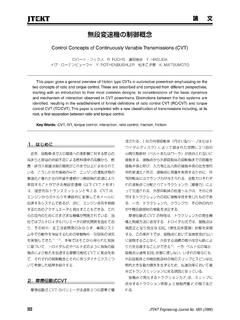Transcription of Health Promoting Universities - WHO/Europe
1 1 World Health OrganizationRegional Office for EuropeCopenhagenHealth PromotingUniversitiesConcept, experience andframework for actionEdited byAgis D. Tsouros, Gina Dowding,Jane Thompson & Mark Dooris3 ISBN 92 890 1285 4 EUR/ICP/CHVD 03 09 011998 ENGLISH ONLYEDITEDTARGET 14 SETTINGS FOR Health PROMOTIONBy the year 2000, all settings of social life and activity, such as the city, school,workplace, neighbourhood and home, should provide greater opportunities forpromoting of higher education have long been concerned about Promoting Health amongstudents. The settings-based approach to Health promotion can potentially enhance thecontribution of Universities to improving the Health of populations and to adding value inthe following ways: 1) by protecting the Health and Promoting the wellbeing of students,staff and the wider community through their policies and practices, 2) by increasinglyrelating Health promotion to teaching and research and 3) by developing Health promotionalliances and outreach into the community.
2 This working document provides conceptualand practical guidance on how to set up and develop a Health - Promoting university proj-ect. It combines a series of innovative case studies from the United Kingdom and theoutcome of a WHO round table meeting on the criteria and strategies and operationalattributes of the Health Promoting Universities project and an action framework for aEuropean Network of Health Promoting PROMOTIONPROGRAMME DEVELOPMENTPUBLIC Health trendsSUSTAINABILITYHEALTH FOR ALLHEALTHY CITIESEUROPEC over design:Graphic design consultants:Matthew J. SumblandRowland & Hird, Lancaster, United Kingdom World Health OrganizationAll rights in this document are reserved by the WHO Regional Office for Europe. The document maynevertheless be freely reviewed, abstracted, reproduced or translated into any other language (but not forsale or for use in conjunction with commercial purposes) provided that full acknowledgement is given tothe source.
3 For the use of the WHO emblem, permission must be sought from the WHO Regional translation should include the words: The translator of this document is responsible for the accuracyof the translation. The Regional Office would appreciate receiving three copies of any translation. Anyviews expressed by named authors are solely the responsibility of those document was text processed in Health Documentation ServicesWHO Regional Office for Europe, iForeword .. iiiIntroduction .. 1 Agis D. Tsouros1. ContextThe historical shift in public 5 John AshtonFrom the healthy city to the healthy university: project development and networking ..11 Agis D. TsourosThe settings-based approach to Health promotion ..21 Mark Dooris, Gina Dowding, Jane Thompson & Cathy Wynne2. Health and higher educationUniversities and Health in the twenty-first century.
4 33 Nicholas Abercrombie, Tony Gatrell & Carol ThomasA common agenda? Health and the greening of higher Toyne & Shirley Ali Khan3. Case studiesAction learning for Health on campus: muddling through with a model?University College of St Martin, BeattieCreating a healthy medical schoolUniversity of Newcastle ..57 Martin WhitePublic Health education for medical students: a problem-based curriculum and new opportunitiesUniversity of Liverpool ..69 Gillian MaudsleyEmbracing organizational development for Health promotion in higher educationLancaster University ..77 Gina Dowding & Jane ThompsonThe healthy university within a healthy cityUniversity of PeterkenThe university as a setting for sustainable healthUniversity of Central Lancashire ..105 Mark Dooris4. The way forwardStrategic framework for the Health Promoting Universities D.
5 Tsouros, Gina Dowding & Mark DoorisA framework for action by a European Network of Health Promoting D. Tsouros & Gina DowdingGlossary of terms related to higher education and the Health care system in the United ..141iPrefaceUniversities can do many things to promote and protect the Health ofstudents and staff, to create Health -conducive working, learning andliving environments, to protect the environment and promotesustainability, to promote Health promotion in teaching and researchand to promote the Health of the community and to be a resource forthe Health of the community. The challenge is to develop Health - Promoting university projects that encourage all these aspects. There isconsiderable enthusiasm for and interest in the concept of the Health - Promoting university.
6 Demand for guidance is also growing. This is aworking document that explores, visualizes and develops the Health - Promoting potential of Universities using the settings-based approachto Health development of the strategic framework for Health -promotinguniversity projects and networks has drawn on a number of sources: ex-pertise developed by the WHO Healthy Cities Project Office; the experi-ence of Health - Promoting university ongoings, especially those at Lan-caster University and the University of Central Lancashire in England; theexperiences of other settings-based projects, such as Health PromotingSchools and Health Promoting Hospitals; the ideas and papers presentedat the First International Conference on Health Promoting Universities inLancaster, England in 1996; and the WHO round table meeting on thecriteria and strategies for a new European Network of Health PromotingUniversities in commitment and active engagement of senior university ex-ecutives is essential to the success of Health - Promoting university proj-ects.
7 I am therefore delighted that two inspired and committed vice-chancellors (rectors) in the United Kingdom have endorsed this would like to express my gratitude and appreciation to Gina Dow-ding for her valuable contribution as the principal technical adviser indrafting the papers on strategy and in the preparation of this book. Manythanks are also due to Mark Dooris and Jane Thompson, the other two co-editors of the book, for their input. Appreciation and many thanks are dueto the following people whose initial commitment to the idea of thePrefaceiihealth- Promoting university enabled this document to become reality:John Ashton (NHS Executive Office North West), Aislinn O Dwyer(NHS Executive Office North West), Tony Gatrell (Lancaster Univer-sity Institute for Health Research), Sarah Andrew (Lancaster Univer-sity Department of Biological Sciences) and Cathy Wynne (More-cambe Bay Centre for Health Promotion).
8 A special word of thanksgoes to Dominic Harrison, English Health Promoting Hospitals Na-tional Network Coordinator, for his support. I thank Birgit Neuhaus forvaluable editorial assistance. Many thanks to David Breuer for im-proving the language and the style of the D. TsourosRegional Adviser for Urban Health PoliciesCoordinator, Healthy Cities projectHead, Urban Health CentreWHO Regional Office for EuropeiiiForewordWe are very pleased to endorse this book, which provides a timely in-troduction to the concept and practice of the Health - Promoting and Central Lancashire were two of the very firstuniversities in Europe to establish Health - Promoting university very different Lancaster is an old university, whereas CentralLancashire is a new university, and Lancaster is a campus universitysome five kilometres from the city, whereas Central Lancashire is situatedin the heart of the town of Preston the processes involved in setting upand developing the projects have had many similarities.
9 These arereflected in the case studies later in the document. Both situated in thenorth-west of England, the two Universities have been well placed toexchange ideas and experiences. This collaborative approach to thedevelopment of good practice has been a refreshing expression of theprojects underlying principles within an increasingly heart of any Health - Promoting university initiative must be atop-level commitment to embedding an understanding of and com-mitment to sustainable Health within the organization in its means a number of things. As large institutions, Universities can build a commitment tohealth into their organizational culture, structures and practices creating supportive working, learning and living environments.
10 As major employers, Universities can promote staff wellbeingthrough appropriate management, communication and opera-tional policies. As creative centres of learning and research, Universities have thepotential to develop, synthesize and apply Health -related knowl-edge and understanding. As educators of future generations of decision-makers, universi-ties have the potential to develop a critical understanding of sus-Forewordivtainable Health and a sense of personal and community steward-ship which will affect society at large. As settings within which students become independent, universi-ties have both a responsibility and the potential to enable healthypersonal and social development. As a resource for and a partner in local, national and global com-munities, Universities have a crucial role in advocating and medi-ating for healthy and sustainable public the twenty-first century approaches, Universities occupy a uniqueposition in society, drawing on a rich educational and cultural heritage,while being at the cutting edge of technological and other innovativedevelopments.
















